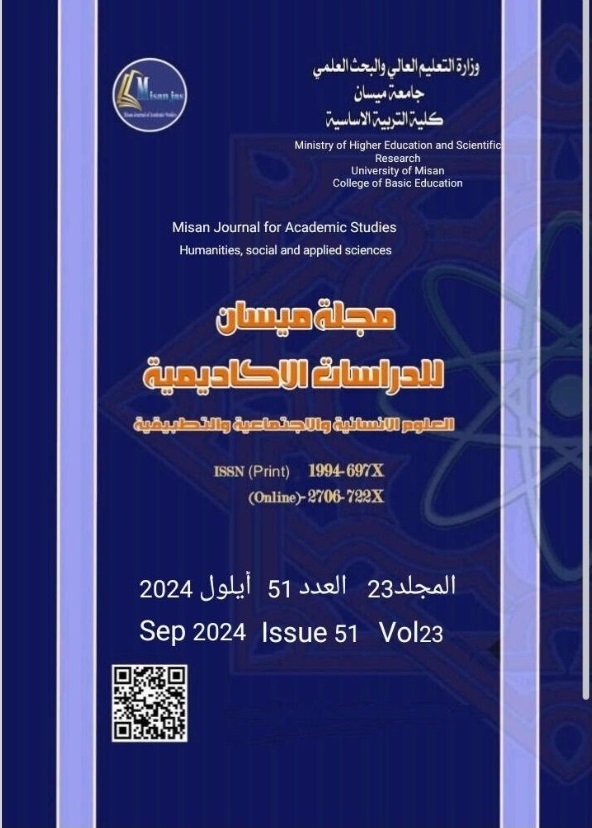The Sounds of Colours: A Pragmatic Study of Toni Morrison’s The Bluest Eye
Abstract
Little is known about the pragmatic and cultural meanings of colours that authors use to deliver specific ideas and messages. It is still undetermined whether colours can express the speaker’s intended meaning. One of the areas that should be visited is the literary works with a long history of familiarity with colours. The present study scrutinizes the most frequently used colours in Toni Morrison’s The Bluest Eye (1970); it investigates their pragmatic and cultural meanings. It aims to determine the primary concept revealed through colours and identify the most flouted maxim in the novel. The main question that the study tries to answer is what are the most frequent colours and their cultural sounds in Morrison’s The Bluest Eye that determine the main concept by pinpointing the most flouted maxim. It is hypothesized that blue, white and black are the most common colours in the investigated contexts. Racial discrimination is the central concept shown through flouting quality maxim. Randomly selected extracts are analysed according to a model based on Grice’s (1975) Maxims Breaching. In the present study, data has been approached qualitatively. The study has come up with certain conclusions to prove the above hypotheses such as it is found that blue, white and black are the most used colours.
Downloads
Copyright (c) 2024 (Humanities, social and applied sciences) Misan Journal of Academic Studies

This work is licensed under a Creative Commons Attribution-NonCommercial-NoDerivatives 4.0 International License.
The copyright is also the copyright of the magazine only.
All articles published in our magazine are subject to license terms
Creative Commons Attribution(CC BY-NC-ND 4.0) This license permits the content to be reproduced, redistributed and reused in whole or in part for any purpose free of charge, without any permission from the author(s), researcher or student.
Works submitted to Maysan Journal of Academic Studies for publication in the journal (CC BY-NC-ND 4.0) license terms. Where available content can be shared, distributed and replicated provided there is no commercial profit and appropriate credit must be given to the original source through sources or citations. It is mandatory to review any material used from other sources including shapes, tables, and images for re-use under the terms of the Creative Commons License (CC BY-NC-ND 4.0).Provided that there is no modification to the original content



